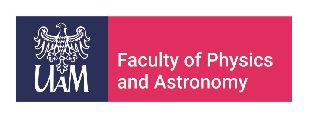| 1. | Amrutha V. Achuthan, Sreedevi Janardhanan, Piotr Kuświk, Aleksandra Trzaskowska Influence of effective thickness in elastic anisotropy and surface acoustic wave propagation in CoFeB/Au multilayer Scientific Reports, 15 (1), pp. 25585, 2025, ISSN: 2045-2322. Abstract | Links | BibTeX @article{Achuthan2025,
title = {Influence of effective thickness in elastic anisotropy and surface acoustic wave propagation in CoFeB/Au multilayer},
author = {Amrutha V. Achuthan and Sreedevi Janardhanan and Piotr Ku{ś}wik and Aleksandra Trzaskowska},
url = {https://doi.org/10.1038/s41598-025-08560-8},
doi = {10.1038/s41598-025-08560-8},
issn = {2045-2322},
year = {2025},
date = {2025-07-15},
journal = {Scientific Reports},
volume = {15},
number = {1},
pages = {25585},
abstract = {Surface acoustic waves (SAWs) in multilayered nanostructures represent a critical frontier in understanding material behavior at the nanoscale, with profound implications for emerging acoustic and spintronic technologies. In this study, we investigate the influence of the magnetic layer thickness on the propagation of surface acoustic waves in CoFeB-based multilayers. Two approaches to effective medium modelling are considered: treating the entire multilayer as a homogeneous medium and focusing on the region affected by light penetration. The elastic properties of the system are analyzed using Brillouin light scattering and numerical modelling, with a particular emphasis on the anisotropy of Young's modulus and its dependence on CoFeB thickness. The results reveal a significant variation in surface acoustic wave velocity and elastic anisotropy as a function of the multilayer configuration, highlighting the role of the penetration depth in effective medium approximations. The best agreement with BLS measurements was obtained for the effective medium model limited to the optical penetration depth, highlighting the importance of light-matter interaction volume in SAW-based diagnostics. These findings provide valuable insights into the tunability of acoustic and spin-wave frequencies through structural modifications, which is crucial for developing high-performance resonators, surface acoustic wave filters, and spin-wave-based information processing devices.},
keywords = {},
pubstate = {published},
tppubtype = {article}
}
Surface acoustic waves (SAWs) in multilayered nanostructures represent a critical frontier in understanding material behavior at the nanoscale, with profound implications for emerging acoustic and spintronic technologies. In this study, we investigate the influence of the magnetic layer thickness on the propagation of surface acoustic waves in CoFeB-based multilayers. Two approaches to effective medium modelling are considered: treating the entire multilayer as a homogeneous medium and focusing on the region affected by light penetration. The elastic properties of the system are analyzed using Brillouin light scattering and numerical modelling, with a particular emphasis on the anisotropy of Young's modulus and its dependence on CoFeB thickness. The results reveal a significant variation in surface acoustic wave velocity and elastic anisotropy as a function of the multilayer configuration, highlighting the role of the penetration depth in effective medium approximations. The best agreement with BLS measurements was obtained for the effective medium model limited to the optical penetration depth, highlighting the importance of light-matter interaction volume in SAW-based diagnostics. These findings provide valuable insights into the tunability of acoustic and spin-wave frequencies through structural modifications, which is crucial for developing high-performance resonators, surface acoustic wave filters, and spin-wave-based information processing devices. |


